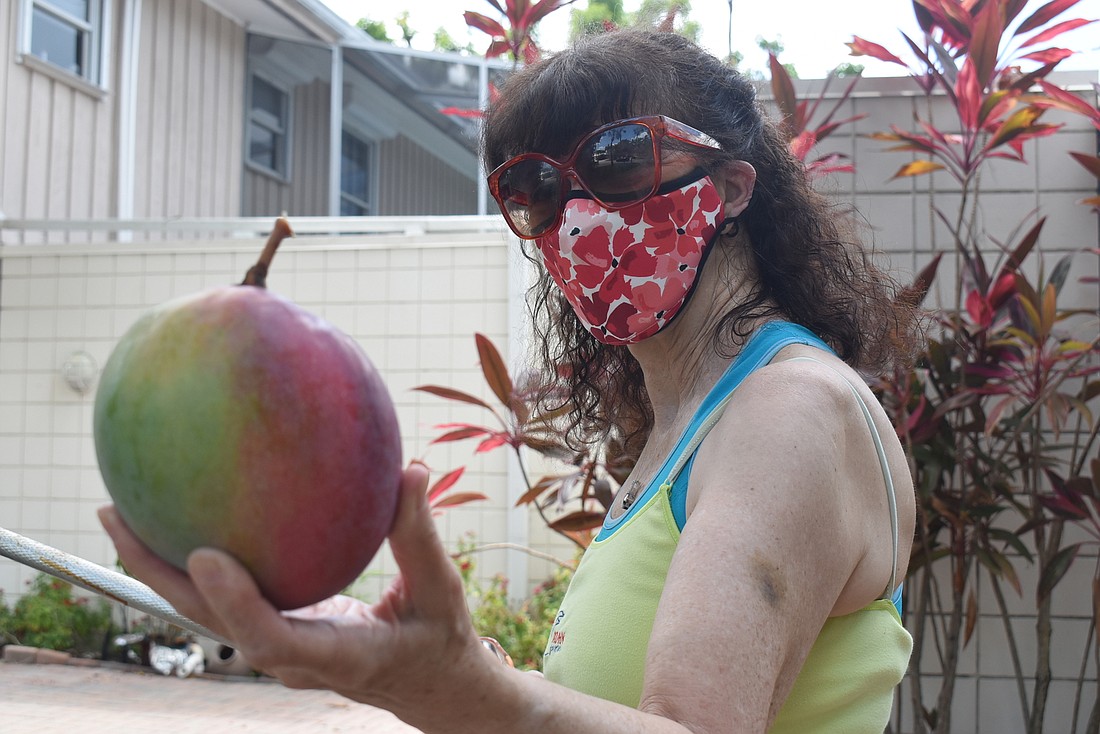- November 24, 2024
-
-
Loading

Loading

Carolyn Michel is not sure how or why they grow — only that she has a duty to pick and pass around as many of the mangoes dangling from the branches of her three trees on St. Armands Key as possible.
“The trees just grow and do their thing,” Michel said. “I have no idea why sometimes there is a fabulous crop and why sometimes there isn't.”
Michel has lived in the mango house since 1985 and the trees were already there. She’s been the caretaker and “mango queen” ever since. One tree is the “mother lode,” reaching tall and sprawling wide, producing possibly hundreds of mangoes a season that get picked, dropped into the street or neighbor’s yard or stolen by small animals. Between this and her other trees, she’s got her work cut out for her every harvest season. The small-time mango farmer picks them with care and a long clipper, sometimes venturing onto the roof to get at the hard-to-reach ones.
“I’m in a mango mania,” Michel said. “‘Tis the season.”
She doesn’t sell her fruit, but happily gives it away to friends, family and neighbors in quantities of 10 or 12 at a time. (She even gives them to passers-by who ask nicely, but will chase away those trying to surreptitiously snag a sample.) One neighbor makes chutney and jam. There are more mangoes than Michel knows what to do with, but she said it’s her duty to try to pick them when it’s time. “Time” is not a hard-and-fast date, but an amorphous concept that’s changed over the years as Floridian temperatures change, keeping Michel on her toes during the summer harvest season.
“The trees are a force of nature,” Michel said. “Because of global warming and the temperature changing in Florida, they bloom at different times than they used to.”
The harvest has nothing to do with her, Michel insists. She just trims them every few years and will occasionally scatter fertilizer around, but there’s no green thumb at work here. She had them trimmed last year; now the 2020 harvest has been huge. Maybe the trees were saying, “Thank god we got our hair cut!” Michel said.
Some mangoes are lost to animals or overripeness, but Michel is reluctant to pick them when they’re too small, so some lost fruit is inevitable. Sometimes, though, she and her husband will rescue the ones that drop or roll away when they step out for morning walks.
“That's my job as a mango farmer, is to harvest them at the correct time and tend to them in my kitchen and then slice them up,” Michel said.
After she picks, she gives the fruits a soapy bath to remove the sap and any animal germs. The mangoes rest in baskets on the counter to fully ripen, where she rolls them around every so often to keep them from getting “little bedsores,” or in the fridge to slow down the ripening process. Some friends are allergic to mango skins, but not the fruits, so Michel slices them up and gives them away allergen-free.
“I just happen to own these houses that have these trees, and the trees do their thing,” Michel said.